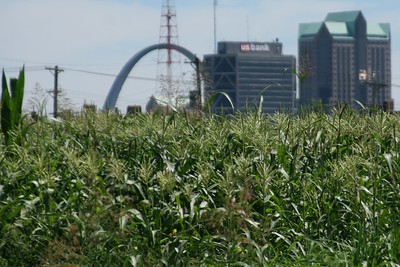I read an interesting piece published by Concentrate last week on the rise of urban farming right here in Washtenaw County. As it turns out, the Home Office is one of the few areas in the country where agricultural activity is on the rise.
An increase in consumer interest in the “farm-to-table” experience, as well as commitments by some local restaurants and grocery stores to support local food producers has increased demand. And, as it turns out, Ann Arbor’s “green belt” is providing operating space for urban farms.
I am not a fan of the greenbelt, but it’s here, and it’s not going away. Using it for local food production is one way for the communities that have lost so much to Ann Arbor’s greenbelt to at least reap some benefit from it.
I wrote about the growing interest in urban farming about a year ago. Finding ways to increase food production without polluting the watershed with fertilizer runoff is one key to successfully increasing small farm food production. Reducing water usage, making more efficient use of small plots of land, increasing the availability of “clean” food, and reducing the carbon footprint of farming are also beneficial.
But we need occupational programs to help people learn how to run small farming operations and non-traditional, year-round farming facilities. Transferring food production away from California to more local producers is desirable for a lot of reasons. In the next 30 years, climate change will make large- scale food production both risky and expensive.
Michigan will likely experience the lowest impact of climate change, which means that we could expect an influx of people into Michigan and the Great Lakes region. Those people will need to eat, and we’ll need an agricultural workforce that can deliver reliable food production year-round.
Urban farming makes a lot of sense
Wouldn’t it be nice if the administration of our local community college were paying attention, and devoted time and resources to developing an urban agriculture program. At the core, a farm is a business. It would not be out of place to run an urban farming program as a business program. Of course, farming also has a major occupational component because there’s also a lot of hands-on work that goes into farming, regardless of exactly how the garden grows.
An urban farm might be the ideal tenant for large-footprint, unoccupied retail space. Could you imagine an urban farm inside former Walmart on Ellsworth -which has been vacant for four years? Or the old Quality 16 – vacant for nearly three years? The best part of urban farming is that it would be contributing to – not competing with – other local businesses. The old Sears store at Briarwood, which has now been demolished, is another example of large, vacant retail space could have been repurposed for local food production.
The US Department of Agriculture projects that prices for food purchased at the grocery store will rise as much as 4.5% in 2024. Part of what’s driving the cost of food is the war in Ukraine. (Ukraine produces a lot of food, and the war has drastically reduced its production.) Weather events – which are growing more unpredictable and more unstable – are causing losses in crop production as well. Right now, urban farming just makes a lot of sense.
Photo Credit: Paul Sableman , via Flickr












